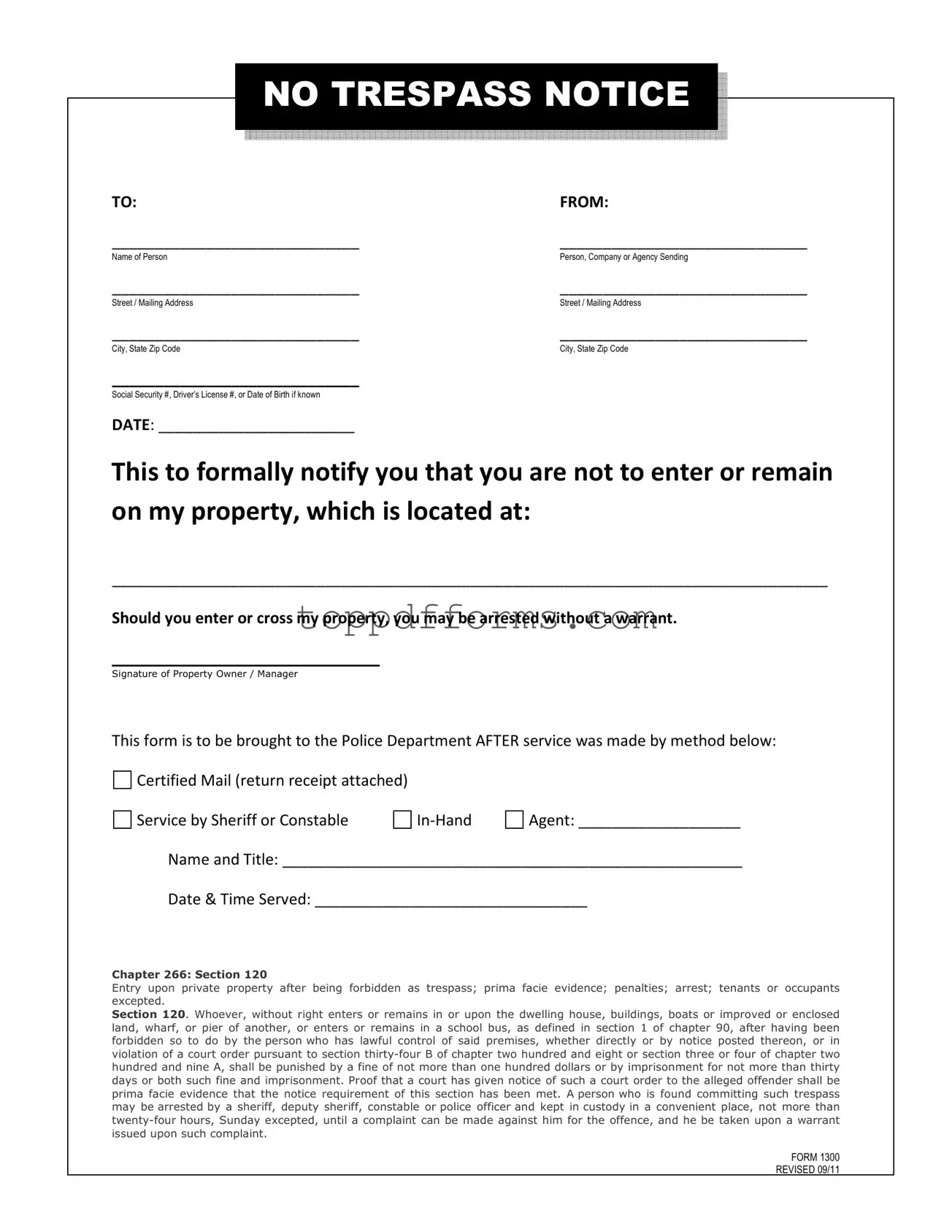What is a No Trespassing Letter?
A No Trespassing Letter is a formal notice that informs someone they are not allowed to enter or stay on your property. It serves as a warning and can help protect your rights as a property owner.
Why would I need to use a No Trespassing Letter?
You might need a No Trespassing Letter if someone is repeatedly entering your property without permission. It can also be useful if you want to prevent unwanted visitors and establish clear boundaries.
How do I fill out the No Trespassing Letter form?
Start by entering your name and address at the top of the form. Then, fill in the name and address of the person you are sending the letter to. Specify the date and include the address of your property where trespassing is not allowed. Finally, sign and date the letter.
What happens if the person ignores the No Trespassing Letter?
If the person ignores the letter and enters your property, you may have the right to call the police. The letter acts as a legal warning, and you can report the trespassing incident to law enforcement.
How should I deliver the No Trespassing Letter?
You can deliver the letter in several ways. The most common methods are certified mail with a return receipt, in-person delivery by a sheriff or constable, or handing it directly to the person. Make sure to document how and when it was delivered.
Can I use a No Trespassing Letter for anyone?
Yes, you can use a No Trespassing Letter for anyone who enters your property without permission. This includes strangers, former friends, or anyone else you do not want on your property.
Is a No Trespassing Letter legally binding?
While a No Trespassing Letter is not a guarantee that someone will not trespass, it does serve as a formal warning. If the person disregards it, you may have legal grounds to pursue further action, such as involving law enforcement.
What information should be included in the No Trespassing Letter?
Include your name and address, the name and address of the person being warned, the date of the letter, and the specific address of your property. Make sure to clearly state that they are not allowed to enter or remain on your property.
Can I revoke a No Trespassing Letter?
Yes, you can revoke a No Trespassing Letter if you change your mind. It’s a good idea to communicate this revocation clearly to the person in writing to avoid any confusion.
What should I do after serving the No Trespassing Letter?
After serving the letter, keep a copy for your records. If the person continues to trespass, you may want to contact local law enforcement and provide them with the letter as evidence of your request for them to stay off your property.
